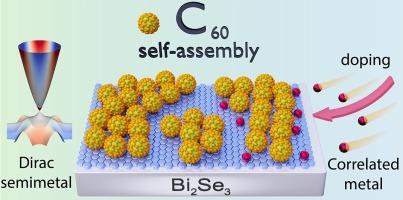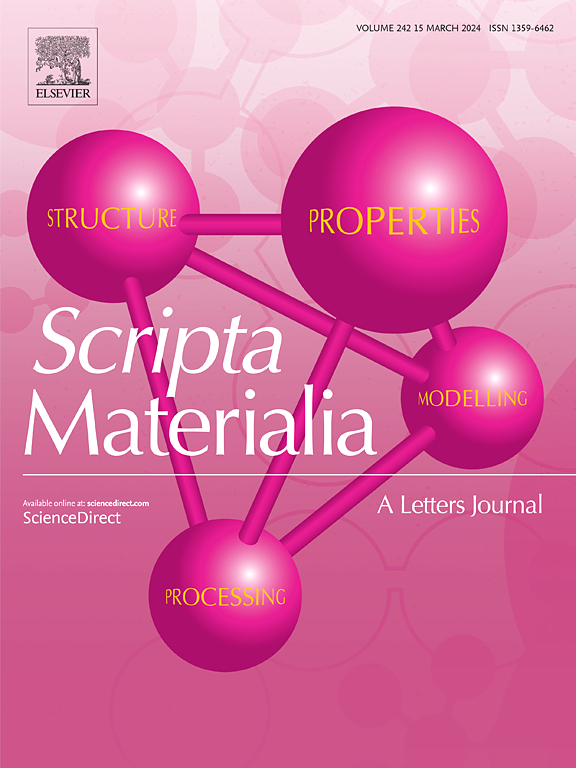C60富勒烯单层与Bi2Se3拓扑绝缘体的界面:从取向有序到未来先进的电子和输运性质
IF 5.6
2区 材料科学
Q2 MATERIALS SCIENCE, MULTIDISCIPLINARY
引用次数: 0
摘要
富勒烯分子最终集成到薄膜中会产生各种迷人的效应,如超导性、拓扑结构和量子输运,然而,在许多杂化分子系统中,强基质介导的相互作用往往会抑制涌现的电子效应。在本研究中,我们将C60富勒烯分子膜与三维拓扑绝缘体Bi2Se3相结合,并使用各种实验技术结合最先进的第一性原理计算研究了该系统的有序性和电子性质。我们合成了高度有序的外延富勒烯单层,并发现它与衬底的电子去耦,由于分子与衬底的相互作用可以忽略不计,这使它几乎处于独立状态。我们发现,电子掺杂和原子插层增强了C60/Bi2Se3的功能,因为它们提高了载流子浓度,并有效地将费米能级转移到分子平坦带附近,这可能使C60/Bi2Se3界面成为高电子相关体系,并揭示了C60/Bi2Se3界面作为一种先进的杂化分子2D材料的巨大潜力。本文章由计算机程序翻译,如有差异,请以英文原文为准。

Interfacing C60 fullerene monolayer and Bi2Se3 topological insulator: From orientational ordering to prospective advanced electronic and transport properties
Integration of fullerene molecules into ultimately thin films gives rise to various fascinating effects, such as superconductivity, topology and quantum transport, however, strong substrate-mediated interaction in many hybrid molecular systems often suppresses the emergent electronic effects. In the present work, we interfaced the C60 fullerene molecular film and a 3D topological insulator Bi2Se3 and investigated the ordering and electronic properties of the system using various experimental techniques combined with the state-of-the-art first-principles calculations. We synthesized the highly-ordered epitaxial fullerene monolayer and found it to be electronically decoupled from the substrate, due to the negligible molecule-substrate interaction, which brings it to the nearly free-standing state. We showed that electron doping and atomic intercalation enrich its functionalities, since they boost carrier concentration and effectively shift the Fermi level to the vicinity of molecular flat bands, which may enable the high-electron correlation regime and reveal a great potential of C60/Bi2Se3 interface, as an advanced hybrid molecular 2D material.
求助全文
通过发布文献求助,成功后即可免费获取论文全文。
去求助
来源期刊

Scripta Materialia
工程技术-材料科学:综合
CiteScore
11.40
自引率
5.00%
发文量
581
审稿时长
34 days
期刊介绍:
Scripta Materialia is a LETTERS journal of Acta Materialia, providing a forum for the rapid publication of short communications on the relationship between the structure and the properties of inorganic materials. The emphasis is on originality rather than incremental research. Short reports on the development of materials with novel or substantially improved properties are also welcomed. Emphasis is on either the functional or mechanical behavior of metals, ceramics and semiconductors at all length scales.
 求助内容:
求助内容: 应助结果提醒方式:
应助结果提醒方式:


